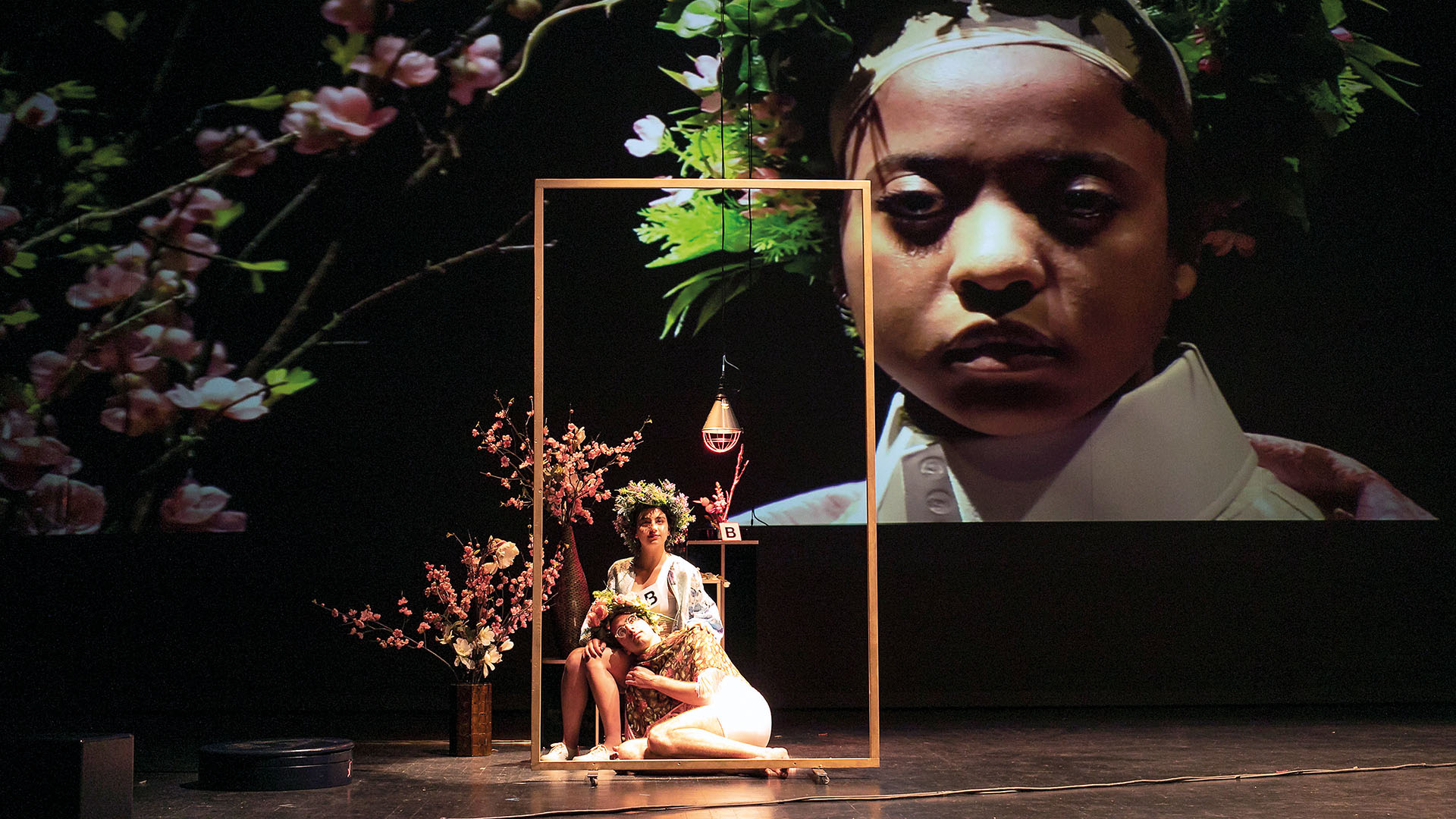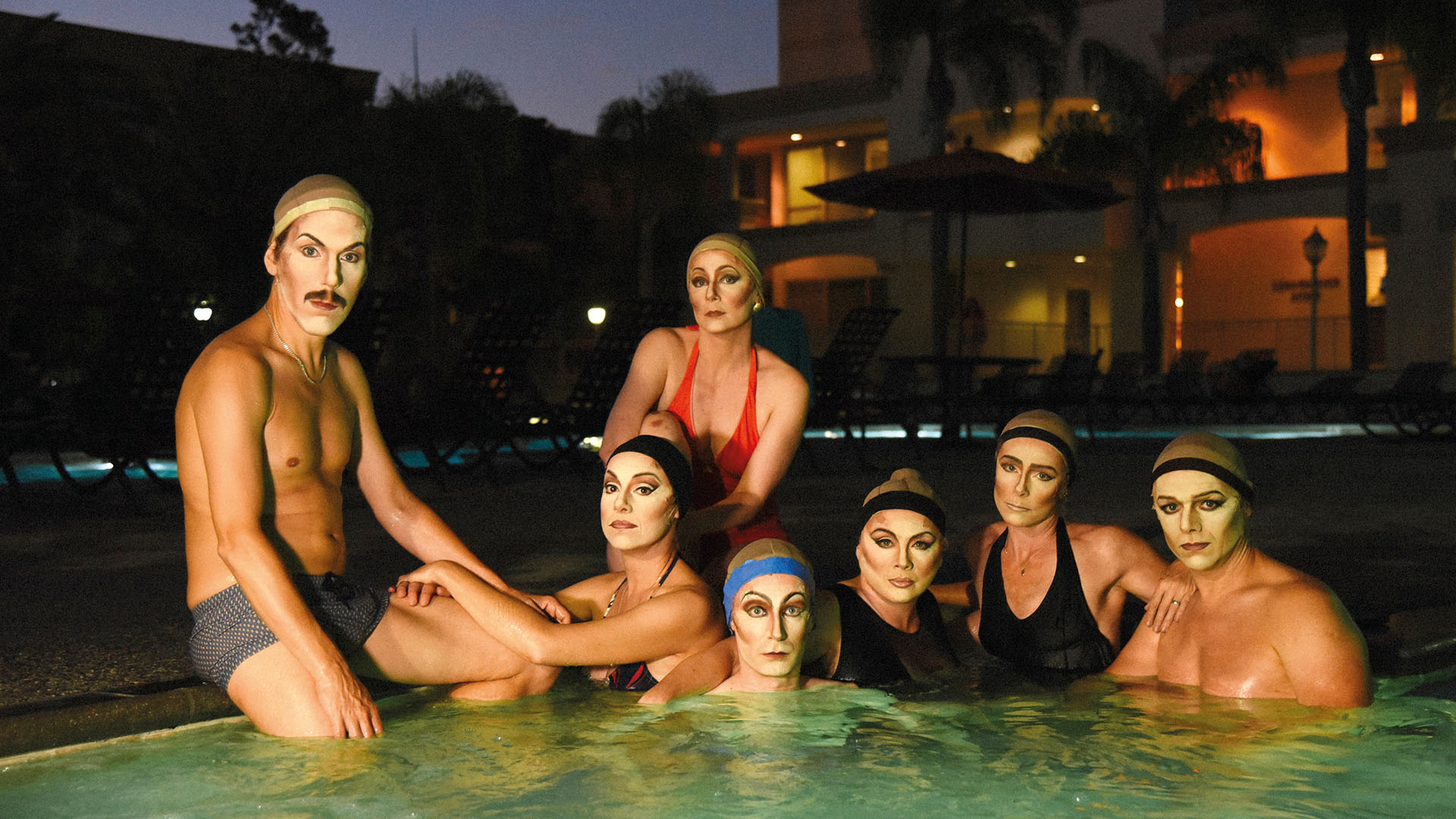

In Venice with the performance “Creation (Pictures for Dorian)” and the installation “Elephants in Rooms” at Forte Marghera, the collective – or rather “the gang” – shares their story in this interview. On June 16th, they will receive the Silver Lion at Ca’ Giustinian.
When we interact with audiences and passers-by, we like to lift them up and present them as the real stars of the evening, some kind of precious objects trouvés.
The 52nd Venice Theatre Biennale art directors Stefano Ricci and Gianni Forte awarded the Silver Lion to Gob Squad, in their words “among the most deep, poetic, political, innovative theatre artists in the world.” A collective, or rather a ‘gang’ as they fashion themselves, the seven members got together in Nottingham in 1994 and later moved to Berlin. They make theatre in any place where life happens, and they do it by continuously establishing connections with the Other. In all their shows, contact with the audience is pursued at all costs. Their programme, Joined Forces Audience Participation in Theatre Performing Urgencies, clearly states: “The nineteenth century was a century of actors. The twentieth century was a century of directors. The twenty-first century is a century of spectators.” At the Biennale, we shall see Creation, loosely inspired by The Picture of Dorian Gray. It is a reflection on the passing of time, on morals, on death, and on beauty as currency. Their other installation, Elephants in the Room, is an itinerary through fourteen artist rooms coming from all over the world, who took videos during the pandemic and their windows were the only outlet to the outside world.

In 2024, you will celebrate your thirty years of theatre together. What encourages you to keep researching, to keep interacting with your audience, to stage intellectually curious acts that make us want to reflect on the state of the world?
The simple answer is that we need to. The world is a confusing, frightening, exciting, and magical place. Making art is the best way we have found of processing our response to it, to tell our audiences “This is what we think and feel. How about you?” And the other thing that keeps us going is that we are a gang, a collective, where we can pick each other up and be there for each other when needed. We bounce off each other, so we can share the good and the bad stuff, the ups and the downs. And we try to convey that feeling to our audiences by creating situations where we see and feel each other – where we are not alone.
We read with much interest your 2016 text, and we are looking forward to seeing and listening to Creation. Do you still believe that our century won’t be all about actors and directors, but about audiences?
At the beginning of Creation (loosely inspired by Oscar Wilde’s character, Dorian Gray) we set out the triangular relationship between artist, art object, and viewer. The artist can make the most profound object in the world, but it needs an audience to look at it if it is going to have any impact and meaning for the world. It isn’t complete without them. So, we often give our audiences an active part in our performances where they are free to come into the picture themselves if they want. We want our work to be accessible, not closed. That’s why we have often taken it to places where the people are: the streets, a station, shops, etc. With our recent projects, we have been very concerned with who is sitting in the audience watching our work in these theatres. Who is not coming here and why? And how can we change that? One answer is to try and get out of our bubble and try to bring those people on stage and co-create with them, in the heart of the project. Let them tell their stories, in their words.

It feels natural, looking at your work, to think of Living or Warhol, though this might be a superficial association… Over the course of the years, which authors inspired you, and on what issues?
Andy Warhol was indeed a source of inspiration for us, and we based a whole piece on his early films portraying ordinary real life activities like Eat, Haircut, Kiss, Sleep, Kitchen, Screen Tests… by doing some kind of reenactment of these films as a live film performance called Gob Squad’s Kitchen (You never had it so good). In this live film we gradually all replace ourselves with members of the audience who then carry on playing us in the film. It’s a film that needs its audience in order to carry on. We were mainly fascinated in Warhol’s definition and creation of the term Superstars which could be anyone who was hanging out in the Factory at that time. Not necessarily people with a certain training or skill, just people with a certain ‘aura’ that he liked to portray and bring out in front of the camera. Gob Squad likes to elevate the mundane and everyday life. That desire was there from the start. And when we interact with audiences and passers-by, we like to do the same – lift them up and present them as the real stars of the evening, some kind of precious objects trouvés. Apart from Warhol, we have been inspired by lots of authors, films, pop videos and artists over the years. Here is just some of them:
Maggie Nelson, On Freedom and The Argonauts on topics of freedom, care, justice, and identity
Emma Kay, Worldview, on writing history.
Naomi Klein, This Changes Everything, No Logo on the subjects of ecofeminism and how to save the future
Sheila Heti, How should a person be, Motherhood on the mashup of memoir, fiction and philosophy
Ian McEwan, Saturday, Machines Like Us on the subject of technological progress and AI and the moral questions it all comes with…
David Byrne, True Stories (Film, 1986) and the Talking Heads’ Stop Making Sense
The Wizard of Oz (Film by Victor Fleming, 1939)
We want our work to be accessible, not closed. That’s why we have often taken it to places where the people are: the streets, a station, shops…
Windows are a recurrent symbol in the work of many poets and authors, from Pessoa’s Tabacaria to Kafka’s Betrachtung. In Elephants in Rooms, what role do you assign windows?
Both windows and paintings have a frame, a rectangle that defines the edge of what can be seen. The viewers of Elephants in Rooms regard the people on the 14 screens as characters in a painting. The people on video, however, are busy gazing out of their windows. So the viewers look through one frame at people gazing out of another. Windows form a membrane between what is public and what is private, what is chosen to be revealed, and what remains hidden, just out of sight.
You don’t call yourself a theatre company, rather a gang. What initiation rituals do you perform when someone new joins in?
If they are a performer, we try and put them at ease, we tell them “you are playing yourself, not a fictional role, so you can’t do it wrong. All you have to do is be yourself”. We also have an extreme version of a high-five: a way of clapping hands together with a slightly dangerous level of impact. The most important thing for new members and coming together is that we can have a laugh together, that we get on. We were friends first before collaborators.
Every gang worth its name has a totem, what is your totem?
There is a golden sequined glitter suit which has appeared in many shows over the past 30 years. It refuses to wear out, and conveys magical powers of connecting to audiences and passers-by to all who wear it. And we have worn it all across the years and the world on various bodies and projects. It stands for drag, fun, and an invitation to shine.